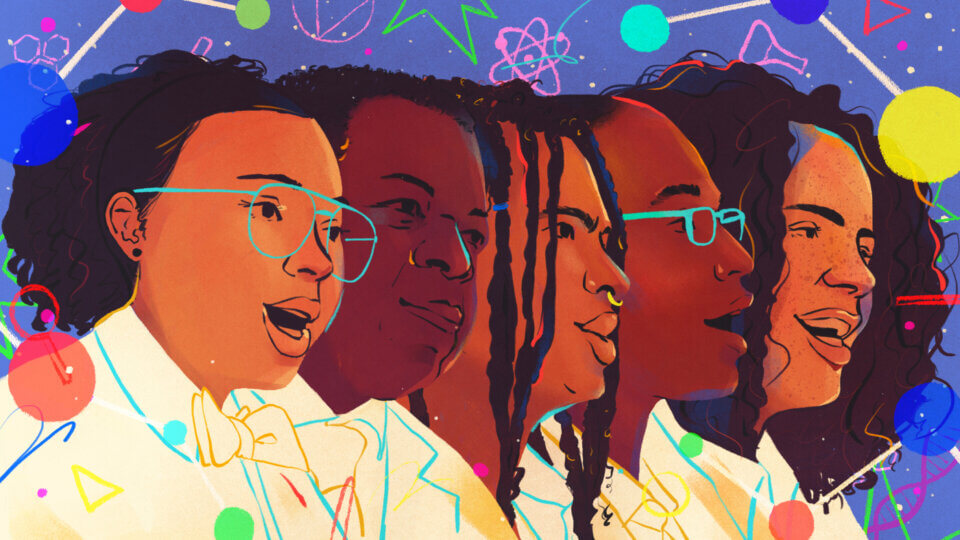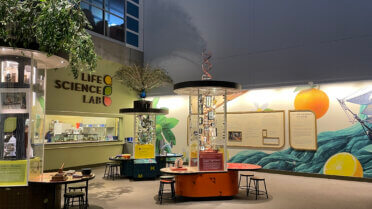↑ Photo Credit: Kristen Uroda for NPR
The Saint Louis Science Center envisions an equitable and inclusive society where people are passionate about science and use it to improve lives, transform communities and empower future generations. Through exposure to STEM concepts and recognition of contributions made by members of various communities, we hope that individuals from all backgrounds can find their place in STEM.
As we celebrate Black History Month, we’re recognizing a few STEM-sational individuals who’ve inspired us all to make an impact:
Dr. Rebecca Lee Crumpler – the first African American woman to earn a medical doctorate. (1831-1895)
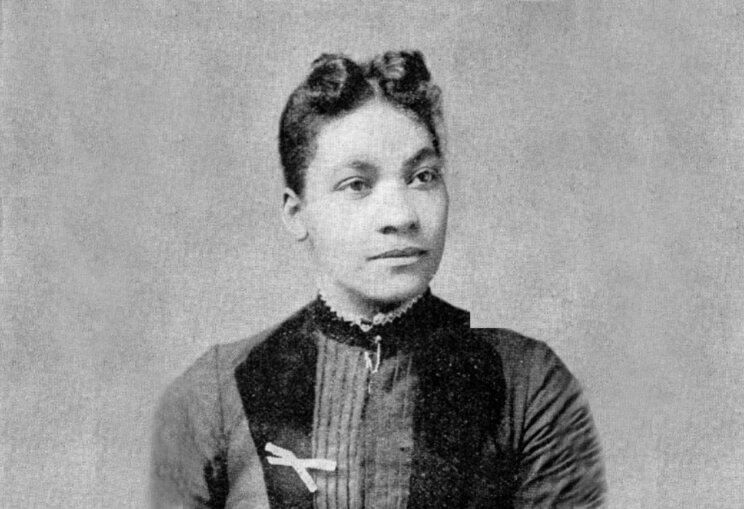
Challenging the prejudice that African American could not pursue a career in medicine, Rebecca Lee Crumpler became the first African American woman in the United States to earn a medical doctorate degree in 1864. After spending her formative years raised by her aunt, a woman who spent much of her life caring for sick neighbors, Crumpler worked as a nurse without formal training (because the first school of nursing did not open until 1873) from 1852 to 1860 before she was admitted to the New England Female Medical College in 1860. She earned numerous commendations during her time in college and earned a “doctress of medicine” in four years.
After earning her degree, Dr. Crumpler practiced in Boston before moving to Richmond, Virginia following the conclusion of the Civil War in 1865. Working with the Freedmen’s Bureau, her practice focused primarily on diseases affecting women, children, freed slaves and indigent patients who would not have had access to medical care otherwise. She returned to Boston and, in 1883, wrote A Book of Medical Discourses in Two Parts — one of the first medical publications written by an African American — using journal notes from her work to provide guidance on maternal and child health.
For more information:
New England Journal of Medicine
Boston University School of Medicine
Dr. Mark Dean – a computer engineer who invented a system that allows computers to connect with peripheral devices and helped develop the color PC monitor. (1957-Present)
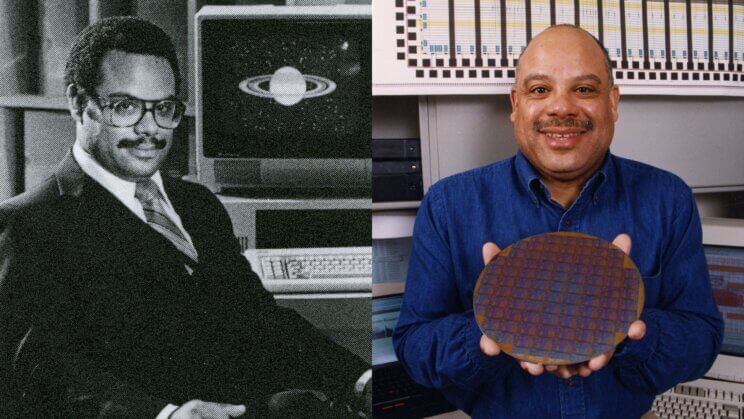
Excelling at math and loving to tinker in his youth, Dr. Mark Dean is one of the most recognized African American inventors in the field of computer science. He earned a bachelor’s degree in electrical engineering from the University of Tennessee, a master’s from Florida Atlantic University and a doctorate from Stanford University. He began his career with IBM in 1980 and served as chief engineer to design the original IBM Personal Computer.
Dr. Dean’s 20 years of work at IBM expanded the company’s entry into the personal computing field and enhanced the accessibility of those devices for users. Working with colleague, Dennis Moeller, they developed the Industry Standard Architecture (ISA) systems bus, which enabled peripheral devices – like disk drives, printers, monitors and more — to be plugged directly into computers and expand functionality. His later activity led to the development of the color PC monitor, and his team created the first gigahertz chip, which enables a computer to complete one billion calculations per second.
In recognition for his work, Dr. Dean was the first African American named as an IBM fellow, was the Black Engineer of the Year in 1997 and 2000, and was inducted into the National Inventors Hall of Fame in 1997.
For More Information:
Dr. Mae Carol Jemison – Flew aboard the Space Shuttle Endeavor in 1992 as a mission specialist to become the first African American woman in space. (1956-Present)
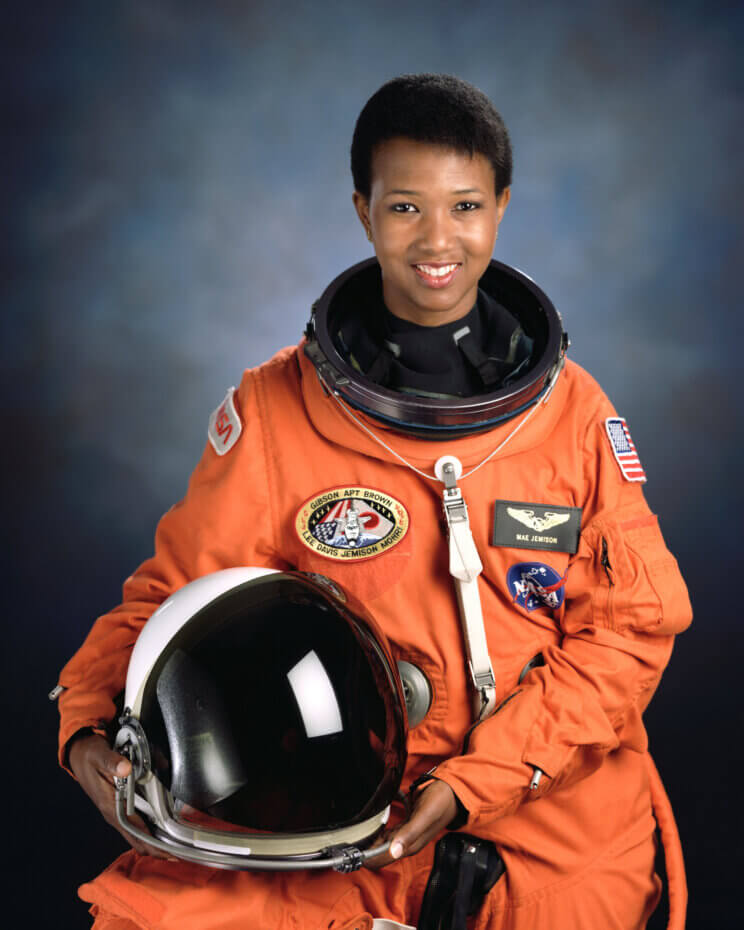
Inspired by Lieutenant Uhura from the Star Trek television program, Dr. Mae Jemison was determined to visit space. She attended Stanford University at the age of 16 and earned a Bachelor of Science in Chemical Engineering and a Bachelor of Arts in African and Afro-American Studies. She then graduated with a medical doctorate from Cornell University in 1981 and joined the Peace Corps to serve as a staff physician.
Watching Sally Ride as the first American woman in space motivated Jemison to apply for NASA’s astronaut program, for which she was chosen in 1987. As a member of NASA Astronaut Group 12, she trained and worked on projects at the Kennedy Space Center and the Shuttle Avionics Integration Laboratory. She received her first mission to join the STS-47 crew and went into space aboard the space shuttle Endeavor in September 1992, making her the first African American woman in space.
Following her return to Earth, Dr. Jemison focused her efforts on expanding education and opportunities for women and other minority groups to excel in STEM. To recognize her accomplishments and dedication, she was inducted into the National Women’s Hall of Fame in 1993 and the International Space Hall of Fame.
For More Information:
National Women’s History Museum
Dr. Lonnie Johnson – career entrepreneur, inventor and engineer – invented the Super Soaker water gun and numerous other successful products. (1949-Present)
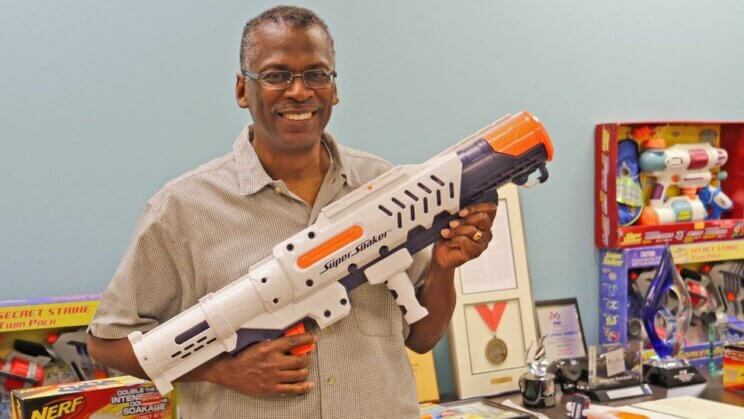
Dreaming of being a renowned inventor as a child, Dr. Lonnie Johnson built his own toys and remained curious as to how things work. He earned a Bachelor of Science in Mechanical Engineering from Tuskegee University in 1973 and a Master of Science in Nuclear Engineering from the school two years later. He then joined the U.S. Air Force, where he was assigned to the Strategic Air Command and helped develop the stealth bomber program. He moved to NASA’s Jet Propulsion Laboratory to work as a systems engineer for missions to explore Jupiter and Saturn before returning to the Air Force and to his tinkering.
Through that tinkering, he sought to create an environmentally friendly heat pump. During testing, he discovered that this invention blasted a powerful stream of water in whatever direction he aimed. This project was improved and rebranded in 1989 to become the popular “Super Soaker” water gun that ranks among the world’s best-selling toys with nearly $1 billion in sales.
Dr. Johnson continued his successful string of inventions by founding Johnson Research & Development. With more than 100 owned patents and numerous products, his companies are working to solve the problems of the future. His Super Soaker was inducted into the National Toy Hall of Fame, and Dr. Johnson was inducted into the National Inventors Hall of Fame in 2022.
For More Information:
Smithsonian Institution: National Museum of American History






